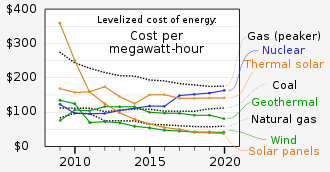
According to the International Energy Agency, in order to reduce global temperature to 1.5 °C, renewable energy will reach 61% of the world’s electricity by 2030 and 88% by 2050, solar and wind energy are the largest part.

Achieving such a high level of renewable Cirro Energy Rates seems daunting, but it is less so when you consider the power of material growth. The market share of solar and wind energy in the world’s electricity generation has recorded a compound annual average growth rate of 15% from 2015 to 2020. If the exponential growth continues at this rate, solar and wind will -reach 45% of electricity production by 2030 and 100% by 2033. Historically, the fastest growing technologies have a “peak rate” of growth – the highest rate of growth that is achieved lasts for a while, and decreases as it approaches 100% adoption. This pattern is known as an S-curve. Power is trying to find out what the fastest is for the growth of solar energy and wind by looking at the most advanced countries that have reached the highest part of the S-curve for solar or wind.
They find that in countries where solar growth has been stable at its highest level, this growth has consumed 0.6% of total annual electricity. That’s less than the 1.4% annual rate needed globally to meet the Paris Agreement’s 1.5°C targets, according to their own benchmarks. Chile is the only country with a mature solar market where the growth rate is higher than necessary. Meanwhile, in countries where offshore wind power is stable at the highest level, this growth has been 0.8% of total annual electricity generation, which is lower than the 1.3% annual rate required worldwide. . Only a few countries with mature wind markets have recorded higher demand than demand, notably Ireland, Portugal, and Brazil. Countries like this show that it is possible to reach such a fast rate – but the key will be to maintain the highest growth and to do it all over the world, not only in the countries with the situation better.
What happens to renewable energy in the future?
When it comes to renewable energy sources, one of the biggest signs of their success is that we haven’t really seen how we take them for granted.
Renewable energy technology is constantly changing and improving. Global energy demand has increased by nearly two-thirds over the past 20 years. Renewables provided only 15.3% of this energy in 2019. Fossil fuels provided the remaining 84.3% of our total energy that year, and carbon emissions are not declining.
The future is washed away in renewable energy, with additional energy capacity planned for the next five years. In its published report on fossil fuels, the International Energy Agency (IEA) predicted that renewables will account for 95% of the net increase in global energy capacity by 2025. The IEA also predicts that electricity from renewables will increase by almost 50% in the next five years to almost 9,745 TWh (terawatt hours). This is a joint venture between China and the European Union.
Despite the clear timing, it seems that the growth of renewables should increase rapidly, although many uncertainties remain depending on the degree of acceleration required.
Political support is increasingly important to ensure that renewable energy adoption follows the S-curve and grows rapidly to meet the goals of the Paris Agreement. All countries, including those that have not yet reached the leaders in this sector, will need to support rapid migration and continue to reduce costs.
